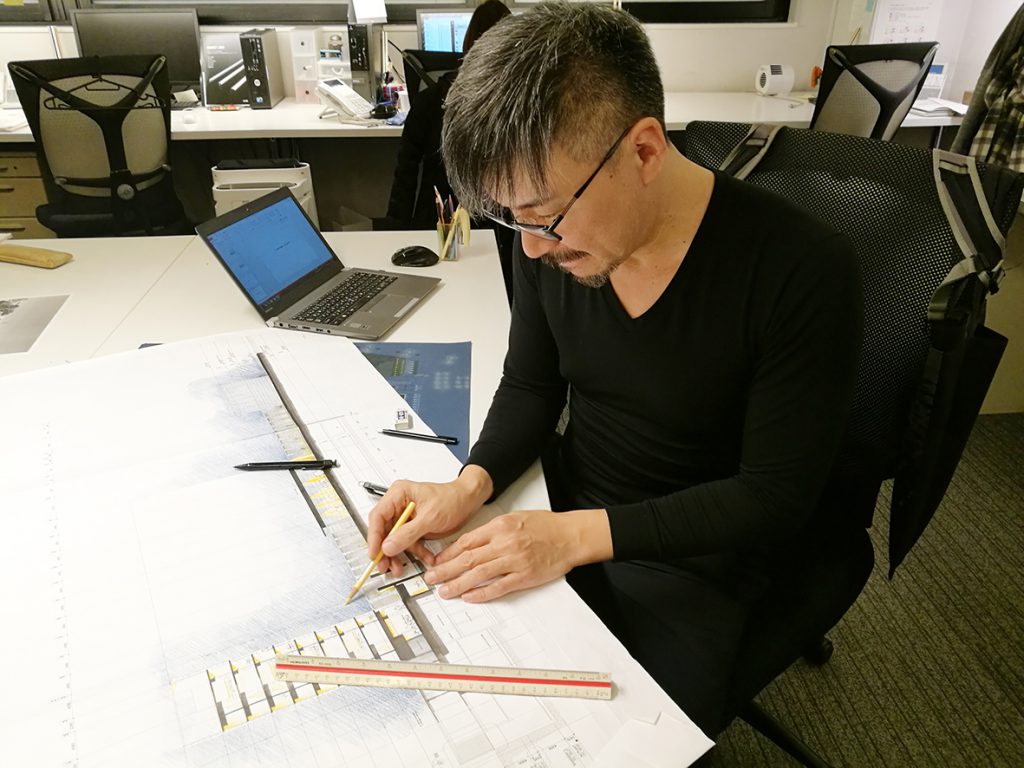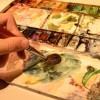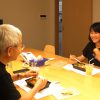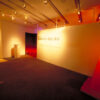Design Starting with Imitating
Interviewer: Kentaro Tanaka



Tanaka: Today, I thought we could talk about lighting design and how to protect copyrights, but I think I`ll tone it down a bit. Shall we discuss the act of imitating instead? So to waste no time, a perfect copy of the original is a big no-no, but what about imitating? Is it important?
Mende:Hmmm. It might be an “honor” to have something imitated, but the act of imitating can lead to noticeable crudeness. Have you ever imitate someone else’s work? I`ve copied many gestures and behaviors over the years.
Tanaka:In the profession of design there are so many imitations. Product design, emblems, fashion, etc. You see and hear about copies all the time.
Mende:I don`t think that is imitating, but plagiarism and stepping over the line to outright infringement of copyright. However, all of the great architects and designers want to be better than those before them.
Tanaka:Yes, you are right. Outright, wrongful intent is just a knockoff. But I think it is a blurred line. There are those that want to learn from the great, but intentional use is unaccusable.
As a professional designer, there are so many times you have a vague feeling of I`ve-seen-this-somewhere-before. And usually, it is probably a similar idea just in a different shape or context. I think design work is a lot of mixing up of things we have seen or are still in our memory banks. Design that is just out of this universe is really a rare encounter.
Mende:However, I`d like to become that designer that everyone wants to copy!! When I was in high school, and an aspiring artist, I reproduced many of the world’s most famous paintings. This is an important part of learning and I`m sure those before us copied the works of those before them and so on. In Japanese, the word to mimic, “mane”, comes from the word “manebu”, which is the origin of the word “manabu”, or to learn. When Philip Johnson designed the AT&T building a long time ago, on the building top there was a spot where a little steam came off and it was lit with a spotlight, which was brilliant! I`ll never forget that scene. After that, whenever I see a little stream I want to illuminate it just beautifully.
Tanaka:While designing there are many scenes that remain in own memories. You think to yourself `why was that so beautiful? ` and hide it deep down inside. This is where lighting design becomes fuzzy, since there is no real material “thing,” making a judgment even harder.
Mende:Yes, lighting effects can become ambiguous in our memories.
But getting back to the topic, I have also imitated the great designers before me. Ikko Tanaka, Takashi Sugimoto, Hiroshi Hara, Toyo Ito.
Tanaka:Gestures, behavior, and the designers themselves are all important “spices.” At meetings or presentations, the sound of one`s voice, speed of talking, hand gestures and so on all remain in our memories and I find myself subconsciously imitating those actions that I thought were really effective. Lately, instead of just listening to a presentation I find myself watching and observing mannerisms.
Mende:Yes, but even though we observe so many different mannerisms, we subconsciously filter out those behaviors and gestures that are not our style or would be hard to imitate.
Tanaka:This might be a little over exaggerated but, just to encounter this kind of situations is very beneficial in the course of life. I really believe so! People that we feel have very deft mannerisms, this says something about the kind of lifestyle they lead. In turn, I think this effects the way in which one view`s oneself and the things we own. This is turning into a lessons-on-life lecture but, being subjected to stimulus is important.
Mende: If one wants to change oneself, you have to physically go about making changes to your lifestyle of it won`t work. Just making small behavior changes is a chain reaction that can lead to other changes within one`s self. Wake up your inner curiosity and it can be actually fun to imitate those mannerisms that you thought were so brilliant. For example, just copying over and over again different ways to draw lines while sketching, and you will discover a new and better way to draw. This is how it has always been done; artists mimicking works from before.
Tanaka:Yes, I was told the exact same thing from senior designers when I first started working. However, it is hard to imitate things perfectly. Eventually, it is a mix of mannerisms that make up one`s individuality.
I think design can become a continuous loop of imitating and being imitated, but we can`t get bogged down in this cycle. I have again realized that curiosity is our weapon of choice on this adventure and the driving force to producing new designs.



















